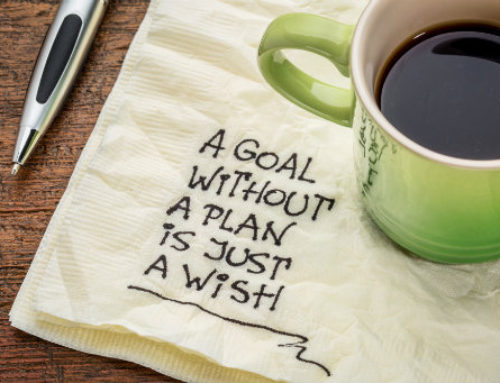Do you want to experience a life transformation? You can! I will begin teaching you how to do this by explaining the power and practice of committing to enable change. It’s the Cycle of Self-Fulfilling Prophecy—the difference between using your perceptions and views to drive outcomes versus making a commitment to achieve your goals in life. Today, I’m going to talk about the second part of commitment, the Cycle of Open Possibility and how the practice of that model can lead to a life transformation as well as transform your workplace. But first, I’d like to share a personal story with you to demonstrate what I mean by the power of commitment.
What Does Commitment Mean?
Commitment, in the context I use the term, is not considered a rigid stance. It is in fact a very resilient, flexible, and open stance, which allows you to keep your idea moving forward even when the actions you must take to make it happen shift drastically. You stay committed to the idea even if your thoughts, feelings, or views change. Commitment is the state or quality of being dedicated to a cause, idea, or activity, etc. 
To illustrate the power of commitment, I am going to share a very personal story. In 2003, I was 100 pounds overweight after the birth of my first child. I had ‘tried’ to lose weight, and no luck. I was stressed out. My thyroid started failing. While this was happening, I was also working on a business start-up, launching a brand-new business venture in 2002. After a round of doctors’ visits, my view of the situation was that my body was permanently broken, and the doctors gave me plenty of reasons to have that belief. Their words assured me that I would have these medical issues for the rest of my life. I believed there was nothing I could to do to lose weight so I just pressed forward with the business, and gave up on my body.
One day, my then 15-month old son ran off from me and headed into traffic. I was too fat and slow to catch him. I helplessly watched him go, and prayed the car would stop. Thankfully, it did. But that day, I went home grateful and committed to the idea that somehow, and in some way, I would get in shape and be able to run faster than my son, because I never wanted to feel that helpless again.
I consciously chose to run my life under the second performance model—the Cycle of Open Possibility. 
I told everyone I ate with and spent time with socially that I was committed to losing weight so they could help hold me accountable. To be sure I did not shirk on my commitment, I took action on it. I took out a home equity loan to the tune of $11,000 and hired a nutritionist-trainer for one year, as I had no idea how I could turn this around. I also took action to be sure I didn’t quit by paying up-front for the entire amount, which was non-refundable, so I knew I would complete the whole time with her.
Whether I felt like it or not, she was at my house three days per week, and checked my food journal every day. Eighty pounds of weight loss later (which took me almost three years to achieve), I experienced a life transformation—I could now race with my son in ease and flow. In fact, I now had to intentionally let him win, because in my new body, I could fly past him.
That is the power of commitment. My views told me my body was broken, and I definitely perceived a painful, non-functioning body. But, I was committed to running faster than my son. This is an example of two different models of performance, with drastically different views.
You can create an idea, commit to it, and change your actions to align with your commitment. The views do not magically disappear; they just lose their power to drive your actions. That is the power of the Cycle of Open Possibility. Watch the video of my presentation on the Cycle of Open Possibility by filling out the form below!







